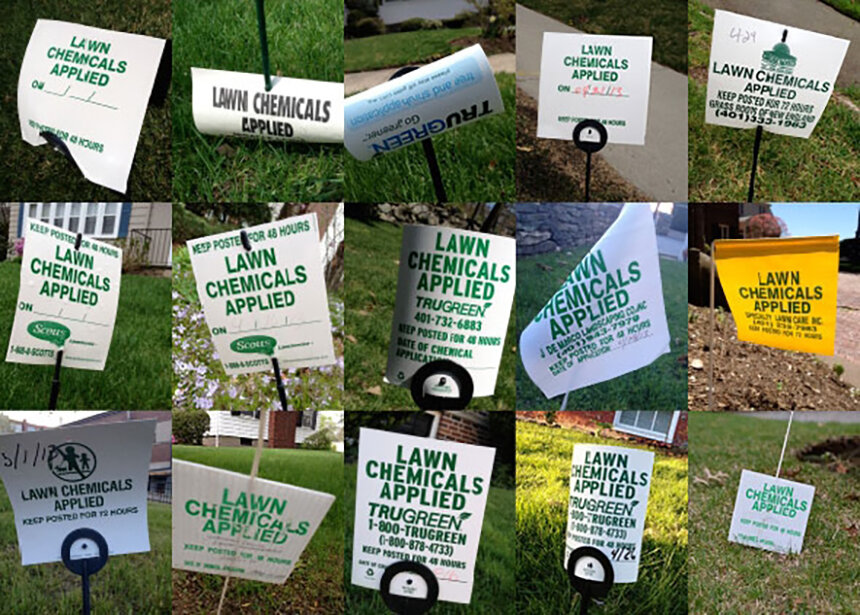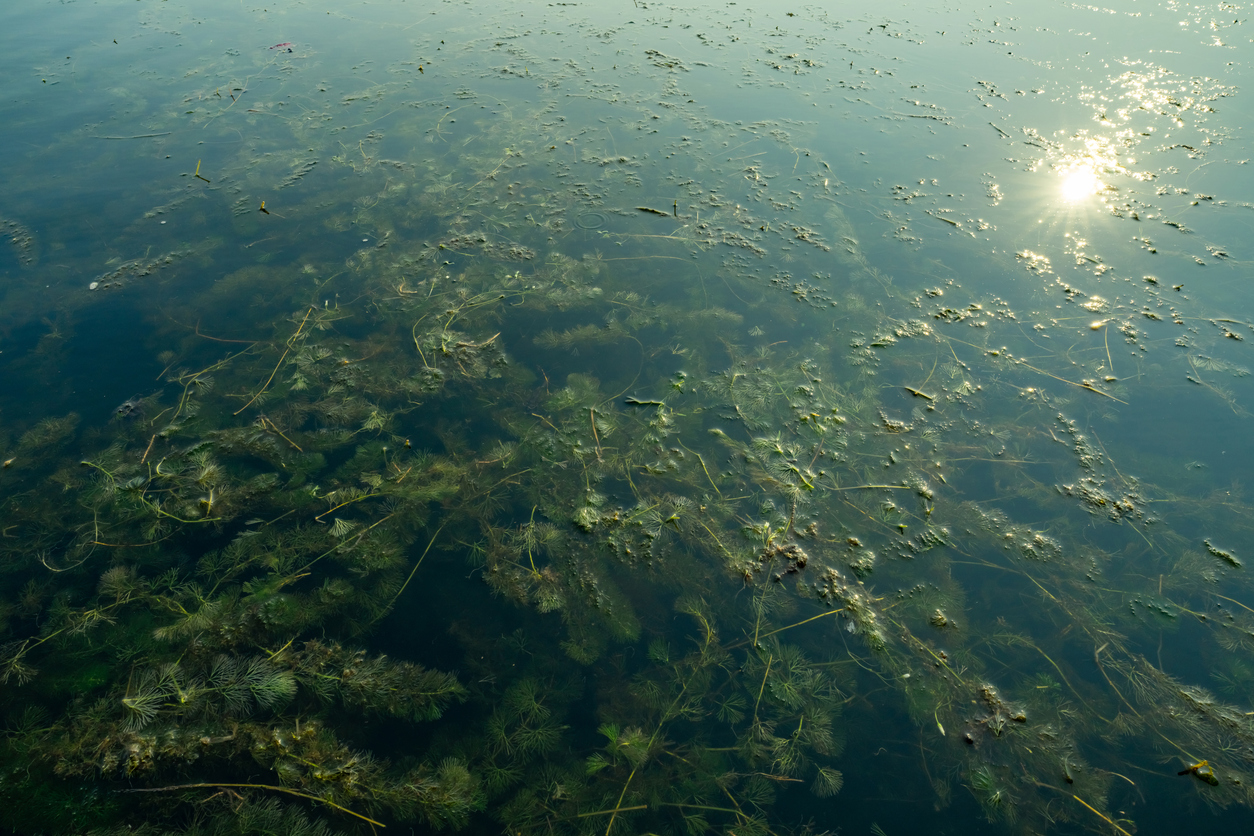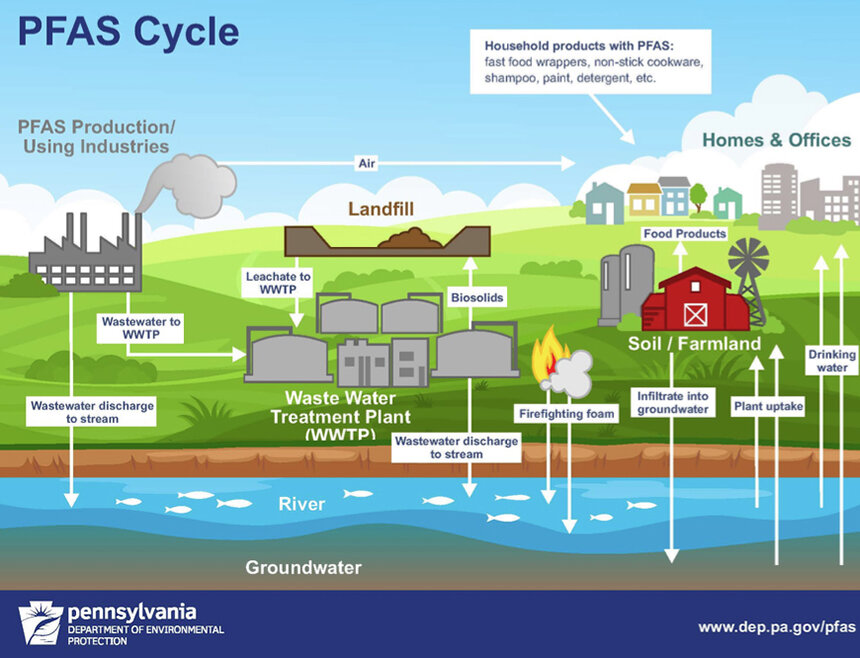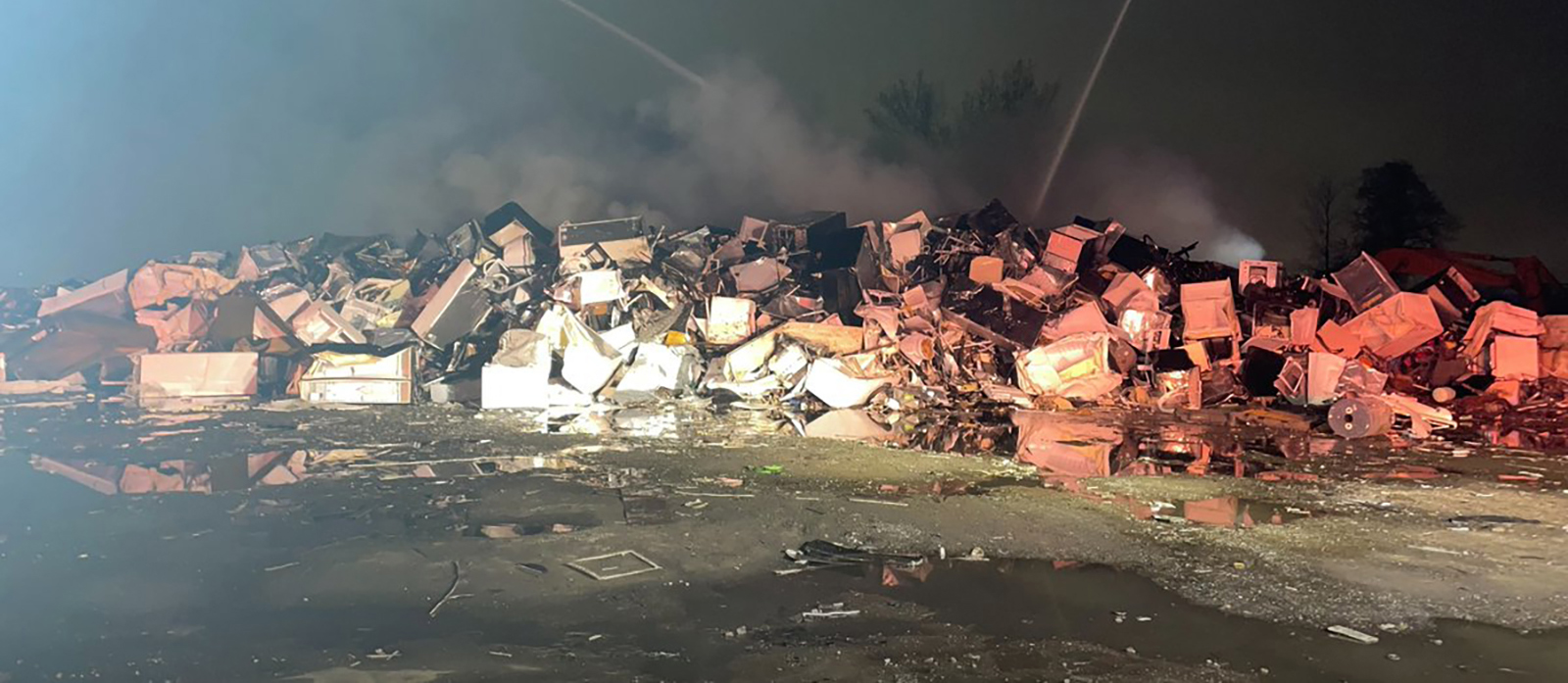Manufactured Wonder of Lawns Closely Tied to Fossil Fuels
Maintenance of these green carpets floods environment with pollutants and impacts public health
May 1, 2021
The amount of pollution, from noise to air to water, created to maintain green carpets and immaculate yards is jarring. Lawn mowers, weed whackers, leaf blowers, pesticides, herbicides, fungicides, and fertilizers. Much of this effort is powered by or made from fossil fuels.
Lawn-care equipment is typically powered by two-stroke engines. They are cheap, compact, lightweight, and simple. They are also highly polluting, generating up to 5 percent of the country’s air pollution, according to the Environmental Protection Agency (EPA).
Each weekend for much of the year, according to estimates, some 54 million Americans mow their lawns. All this weekend grass cutting uses some 800 million gallons of gasoline annually. That doesn’t include the gas used to trim around trees and fences and to blow grass clippings around.
Those 800 million gallons also don’t include the gas used for lawns mowed during the week or by landscaping companies. It doesn’t include the oil that is also burned by these cheap engines. It doesn’t include grass cut on golf courses and along median strips and other public spaces covered by green carpets devoid of diversity.
A 2011 study showed that a leaf blower emits nearly 300 times the amount of air pollutants as a pickup. The EPA has estimated that lawn care produces 13 billion pounds of toxic pollutants annually.
This equipment is also noisy. Leaf blowers emit between 80 and 85 decibels, but cheap or mid-range ones can emit up to 112 decibels. Lawn mowers range from 82 to 90 decibels. Weed whackers can emit up 96 decibels of noise.
Electric lawn equipment is gaining in popularity and will slowly lessen the amount of fossil fuels burned to cut millions of acres of grass — a 2005 study found that about 40 million acres in the continental United States has some form of lawn on it. Electric equipment is also quieter than its gas-powered counterparts.
Much of the 90 million pounds or so of fertilizer dumped on lawns annually are fossil-fuel products. Nitrogen fertilizer, for instance, is made primarily from methane.
As stormwater carrying nitrogen and phosphorus from fertilizer runs off into streams and rivers and eventually into larger waterbodies such as Narragansett Bay, it impacts ecosystems and fuels algal blooms, some toxic, that eventually suck oxygen from water when their dead mass is decomposed.
On Aquidneck Island, for example, stormwater runoff carrying these nutrients is stressing coastal waters and contaminating the reservoirs that feed the Newport Water System.

The amount of toxic chemicals applied to lawns and public grounds annually to jolt grass to life and kill pests is staggering. This copious amount of poison, about 80 million pounds annually, is marked by white and yellow flags warning us not to let children or pets onto these monolithic spaces whose appearance trumps their health and that of the surrounding environment.
These warning flags are planted because of the 30 commonly used lawn pesticides 17 are probable or possible carcinogens; 11 are linked to birth defects; 19 to reproductive impacts; 24 to liver or kidney damage; 14 possess neurotoxicity; and 18 cause disruption of the endocrine (hormonal) system. Another 16 are toxic to birds; 24 are toxic to aquatic life; and 11 are deadly to bees.
Of course, these poisons don’t just kill or harm their intended targets.
While these chemicals hang around “feeding your lawn” or killing life, they are breaking down and working their way into the environment — until another application is applied, sometimes just a few weeks later, and the cycle repeats.
Poisons from these artificial fertilizers and the various -cides applied to lawns can seep into groundwater — contaminating drinking-water supplies — or turn to dust and ride the wind. They cling to people and pets who walk, run, and lie on treated grass. They get kicked up during youth sporting events.
These chemicals can be inhaled like pollen or fine particulates, causing nausea, coughing, headaches, and shortness of breath. For asthmatic kids, they can trigger coughing fits and asthma attacks.
Two of the most common pesticides, glyphosate used in Roundup and 2,4-dichlorophenoxyacetic acid (2,4-D) in Weed B Gon Max, have been linked to a number of health issues, including developmental disorders and cancer. The latter is a neurotoxicant that contains half the ingredients in Agent Orange, according to Beyond Pesticides, a Washington, D.C.-based nonprofit.
The Natural Resources Defense Council (NRDC) has called 2,4-D “the most dangerous pesticide you’ve never heard of.”
Developed by Dow Chemical in the 1940s, the NRDC says this herbicide helped usher in the green, pristine lawns of postwar America, ridding backyards of vilified dandelion and white clover.
Researchers have observed apparent links between exposure to 2,4-D and non-Hodgkin’s lymphoma and sarcoma, a soft-tissue cancer, according to the NRDC. It notes, however, that both of these cancers can be caused by a number of chemicals, including dioxin, which was frequently mixed into formulations of 2,4-D until the mid-1990s.
In 2015, the International Agency for Research on Cancer declared 2,4-D a possible human carcinogen.
Last year Bayer paid nearly $11 billion to settle a lawsuit over subsidiary Monsanto’s weedkiller Roundup, which has faced numerous lawsuits over claims it causes cancer.
Lawns are one of the most grown crops in the United States, but unless you are a goat or a dog with an upset stomach their nutritional value is zero. Yet the collective we continues to spend about $36 billion a year on lawn care.
Instead of putting public health at risk and degrading the environment with a chemically treated lawn, create a yard with a diverse mix of native trees, shrubs, and plants; it is cheaper to maintain, easier to take care of, environmentally beneficial, and more interesting.
Native plants support native wildlife and insects, are accustomed to the weather and soil, and are pest resistant. They support the pollinators of our food crops, clean the air and water, and help regulate the climate. They also make good natural buffers, which capture rainfall and filter stormwater runoff.




The taller you let your grass grow the less it costs to maintain. I don’t water, fertilize or aerate at all.
Much higher 7" grass shades out weeds, does not require watering or fertilizing or any other expensive lawn maintenance.
EcoLawn eliminates almost all expensive lawn maintenance.
I only spend 1/4 the time I used to spend cutting grass now. Twice as fast to cut and then only half as often.
Search "34", $100, 20 lb Triple Weed Whacker Lawnmower"
Switch to moss in dark shady areas. No maintenance at all. Bright green under the snow.
It seems people cut their grass really short in the spring to get rid of the sight of dandelion flowers.
Really bad idea.
That just weakens the grass and encourages more weeds to grow and it leaves most of the dandelion plant behind. People who spent thousands on sod now have a lawn that is bare or mostly weeds after only a couple of years.
there are lots of ways with respect to turf management to grow a decent lawn. granted it needs fertilization and pest control and water but judicious application and soil and turf knowledge can be a reasonable compromise. you can remove dandelions by hand but you do have to treat other weeds with herbicides. i suppose beauty is in the eye of the beholder but my idea of a nice lawn is not a wild collection of every monocot and dicot that decides to take up residence on my lot.
Nice overview of the issues with one important mistake. Algae do not "suck oxygen from water." They produce oxygen via photosynthesis. The problem is when the algae die. Their dead mass is decomposed by bacteria which are the organisms that use oxygen (via respiration) and create the dead zones with low or no oxygen.
Steve, excellent point. Thank you for pointing out my mistake. Much appreciated. I’ve updated the story to fix the error. — Frank Carini, ecoRI News editor